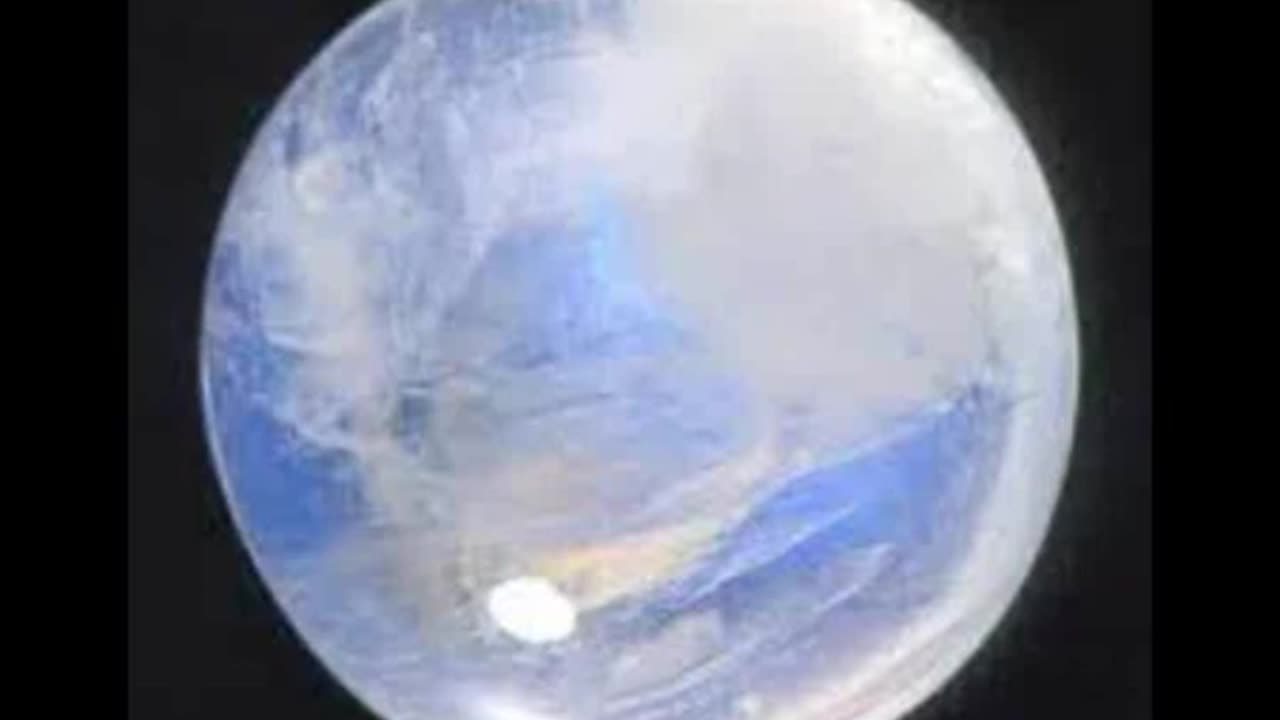Premium Only Content

Moon Stone
https://solitarypaganism.com/crystals-stones/moonstone/
Moonstone is a sodium potassium aluminum silicate ((Na,K)AlSi3O8) of the feldspar group that displays a pearly and opalescent schiller.
An alternative name is hectolitre.
Etymology
Its name is derived from a visual effect, sheen or schiller (adularescence), caused by light diffraction within a micro-structure consisting of regular exsolution layers (lamellae) of different alkali feldspars (orthoclase and sodium-rich plagioclase).
Moonstone has been used in jewelry for millennia, including ancient civilizations.
The Romans admired moonstone, as they believed it was derived from solidified rays of the Moon.
Both the Romans and Greeks associated moonstone with their lunar deities.
In more recent history, moonstone became popular during the Art Nouveau period; French goldsmith René Lalique and many others created a large quantity of jewelry using this stone.
Geology
The most common moonstone is of the orthoclase feldspar mineral adularia, named for an early mining site near Mt. Adular in Switzerland, now the town of St. Gotthard.
A solid solution of the plagioclase feldspar oligoclase +/− the potassium feldspar orthoclase also produces moonstone specimens.
Occurrence
Deposits of moonstone occur in Armenia (mainly from Lake Sevan), Australia, the Austrian Alps, Mexico, Madagascar, Myanmar, Norway, Poland, India, Sri Lanka and the United States.
In popular culture
The moonstone is the Florida State Gemstone; it was designated as such in 1970 to commemorate the Moon landings, which took off from Kennedy Space Center.
Despite it being the Florida State Gemstone, it does not naturally occur in the state
-
 9:21
9:21
asolitarypagan.com
1 year agoMaking Herbal Salves
1.8K -
 13:00:01
13:00:01
ttvglamourx
15 hours ago $13.12 earnedPLAYING WITH VIEWERS !DISCORD
44.3K7 -
 2:22:01
2:22:01
BlackDiamondGunsandGear
9 hours agoI'm Back and I Brought Friends! Welcome to the GUNSHIOW
32.4K5 -
 3:04:23
3:04:23
CriticalRealms
8 hours ago $4.10 earnedGAME & TALK Monster Hunter Wilds
29.3K3 -
 14:53
14:53
China Uncensored
9 hours agoAmerica is Taking Back Farmland from China
26.6K21 -
 1:25:51
1:25:51
Kim Iversen
10 hours agoREJECTED! Putin Says ‘No’ To Trump’s 30 Day Ukraine Peace Deal—Here’s Why
81.1K163 -
 1:40:27
1:40:27
Glenn Greenwald
11 hours agoDHS Seizes Greater Control of Columbia and its Departments; Glenn Takes Your Questions on Ukraine, DOGE, and Free Speech | SYSTEM UPDATE #423
121K174 -
 1:56:46
1:56:46
I,Hypocrite
8 hours ago $6.59 earnedThe Wolf Among Us (Part 1)
45.3K5 -
 1:08:54
1:08:54
Man in America
11 hours ago🚨 The Banking Cabal’s Gold Rig is CRUMBLING—Global Collapse is Now Inevitable w/ David Jensen
51.2K37 -
 2:55:31
2:55:31
I_Came_With_Fire_Podcast
14 hours agoIRAN WANTS NUKES | INFLATION SHRINK | SCHUMER FLIPS ON CR
31.8K9